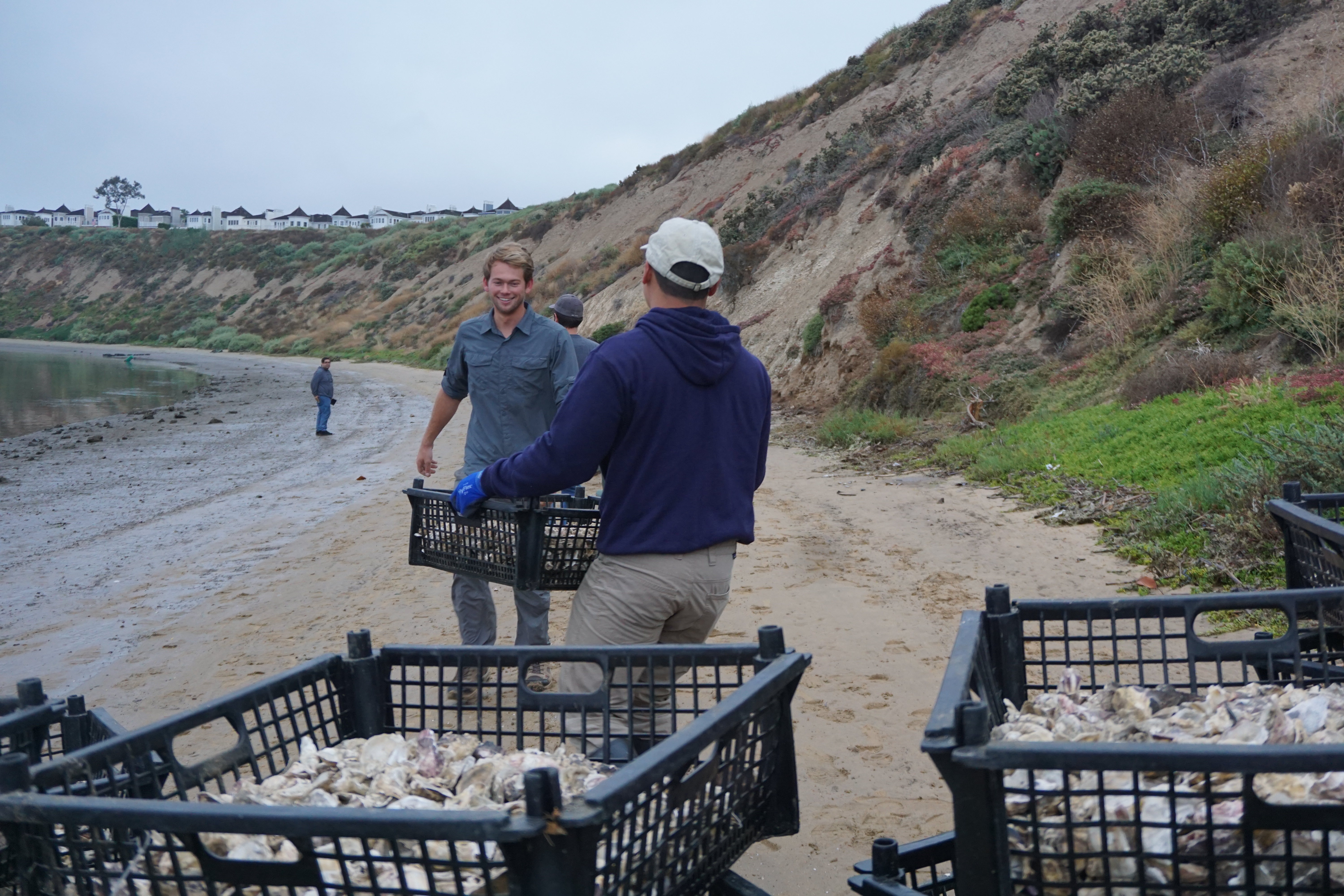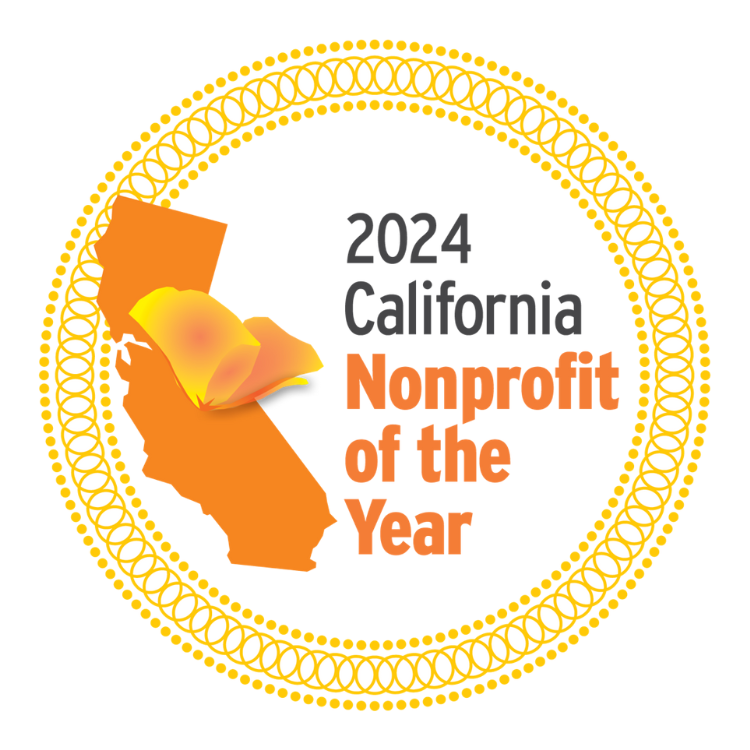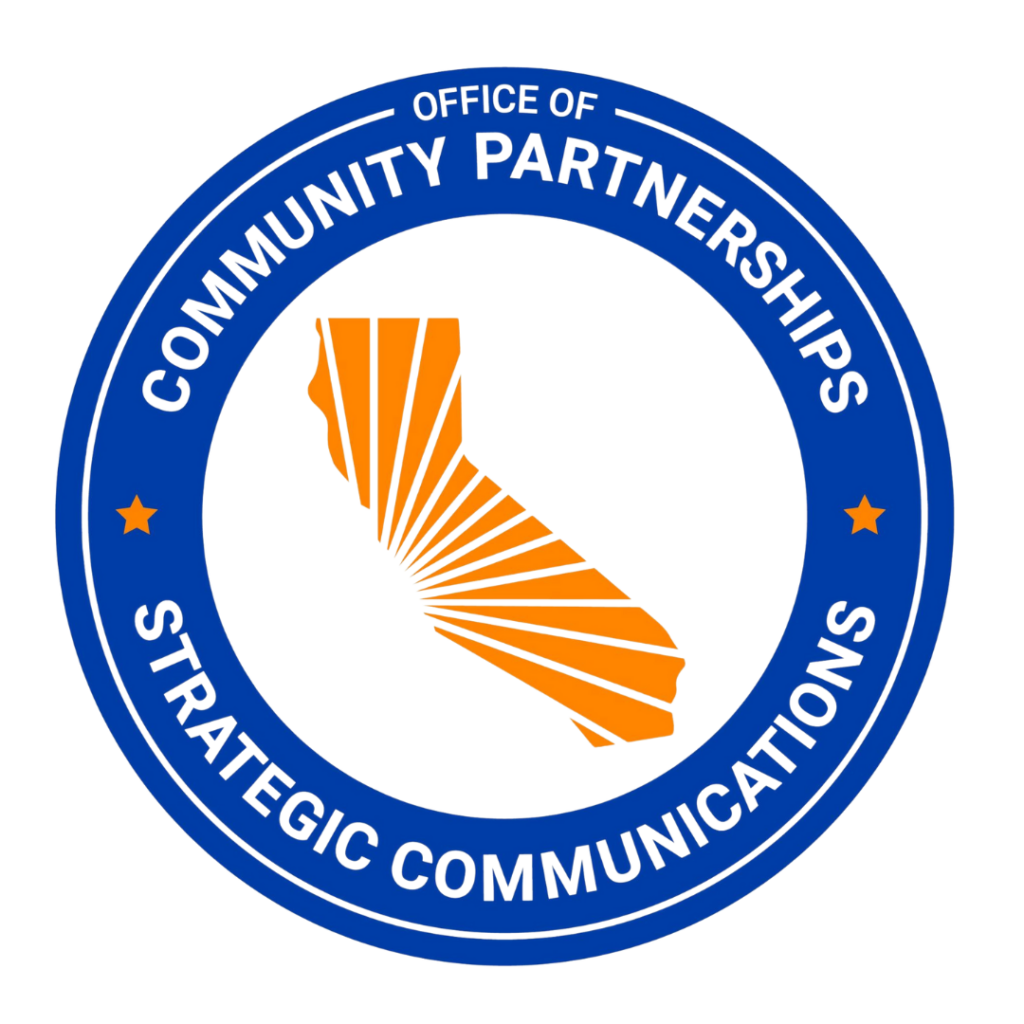Imagine this: you’ve just sat down for a nice seafood dinner with your family overlooking the California coastline. You decide to start out your meal with an oyster platter. After enjoying your meal, a waiter takes away your plate.
You think to yourself, “What happens to the oyster shells after they take them away? Can they be repurposed?”
In California, for the most part, the oyster shells are thrown away with other food scraps. However many programs are starting to harness this resource because the shells can play an important role in restoring oyster ecosystems, something most people don’t know much about when dining on these scrumptious mollusks.
Coastkeeper is discovering through our Living Shorelines project that booming native oyster habitats can improve water quality and provide important habitat for other species. Our marine restoration team partners with Cal State Fullerton and Cal State Long Beach to integrate new habitats of native Olympia oysters in Southern California.

To build these habitats, we must first begin with empty oyster shells that have been dried and out of the water for at least a year. Purchasing these shells can be very costly and difficult to store over long periods of time needed to cure them.
That’s why Coastkeeper is happy to announce our partnership with King’s Seafood and the Irvine Ranch Water District in a new oyster shell recycling program.
After you enjoy an oyster dish at one of the seafood restaurants that King’s Seafood supplies, the oyster shell is transported to an Irvine Ranch Water District facility for storage. With their support, these shells may be used in a future Coastkeeper restoration project rather than going into our landfills.

With help from our new partners, Coastkeeper can keep restoration costs low, resulting in more funds for future projects and outreach.
Please consider funding these restoration projects with a donation or contact our marine restoration director, Katie Nichols, for corporate sponsorship opportunities.






